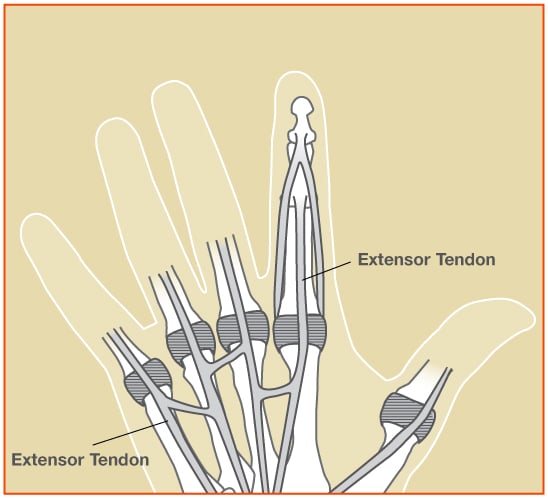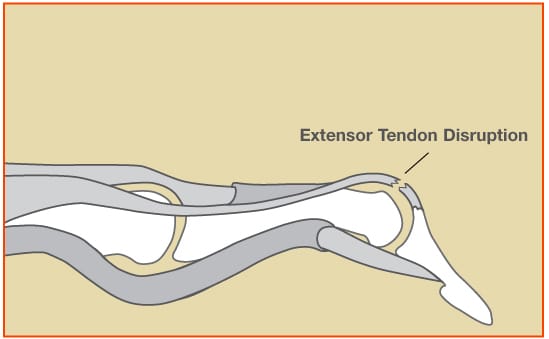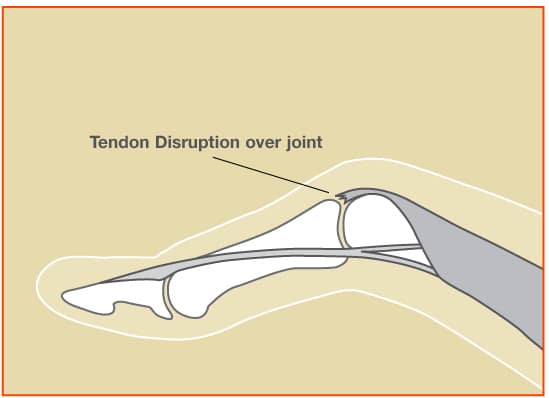Description
Extensor tendons are just under the skin. They lie next to the bone on the back of the hands and fingers and straighten the wrist, fingers and thumb (Figure 1). They can be injured by a minor cut or jamming a finger, which may cause the thin tendons to rip from their attachment to bone. If not treated, an extensor tendon injury may make it hard to straighten one or more joints.
Common Extensor Tendon Injuries
- Mallet Finger : refers to a drooping end-joint of a finger. This happens when an extensor tendon has been cut or torn from the bone (Figure 2). It is common when a ball or other object strikes the tip of the finger or thumb and forcibly bends it.
- Boutonnière Deformity : describes the bent-down (flexed) position of the middle joint of the finger. Boutonniere can happen from a cut or tear of the extensor tendon (Figure 3).
- Cuts on the back of the hand can injure the extensor tendons. This can make it difficult to straighten your fingers.
Treatment
Tears caused by jamming injuries are usually treated with splints. Splints hold the tendon in place and should be worn at all times until the tendon is healed. The tendon may take eight to twelve weeks to heal completely. Longer periods of splinting are sometimes needed. Your doctor will apply the splint in the correct place and give you directions on how long to wear it.
Other treatment for an extensor tendon injury may include stitches (for cuts in the tendon). Also, a pin may need to be placed through the bone across the joint as an internal splint. Surgery to free scar tissue is sometimes helpful in cases of severe motion loss.
After treatment, hand therapy may be necessary to improve motion. Consult your hand specialist for the best form of treatment.



